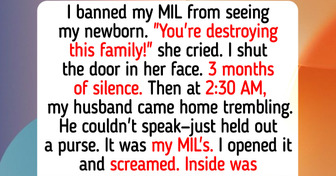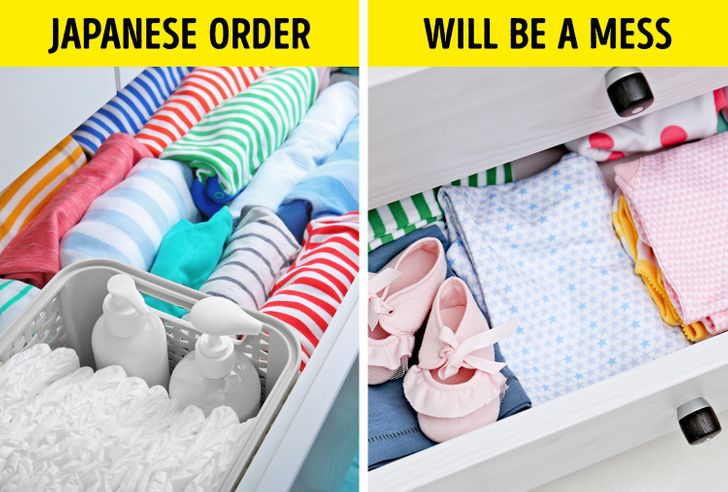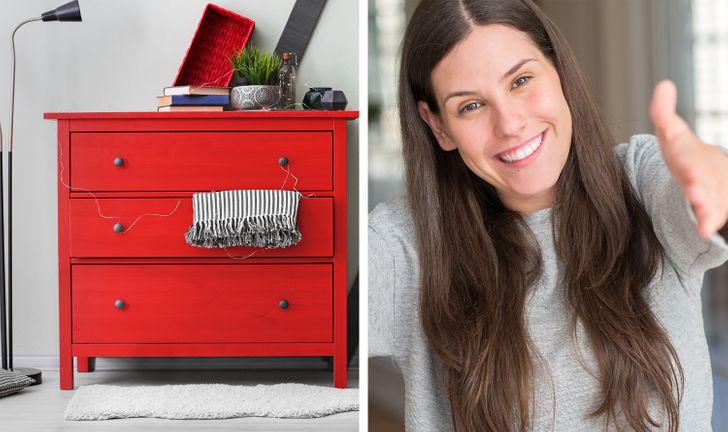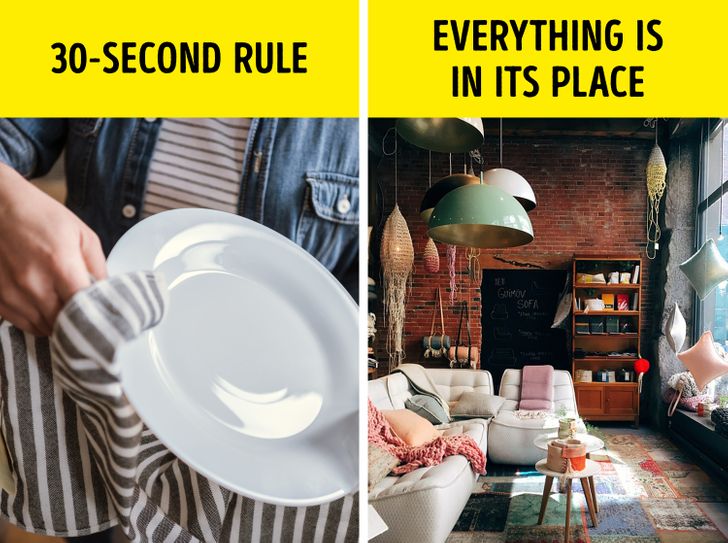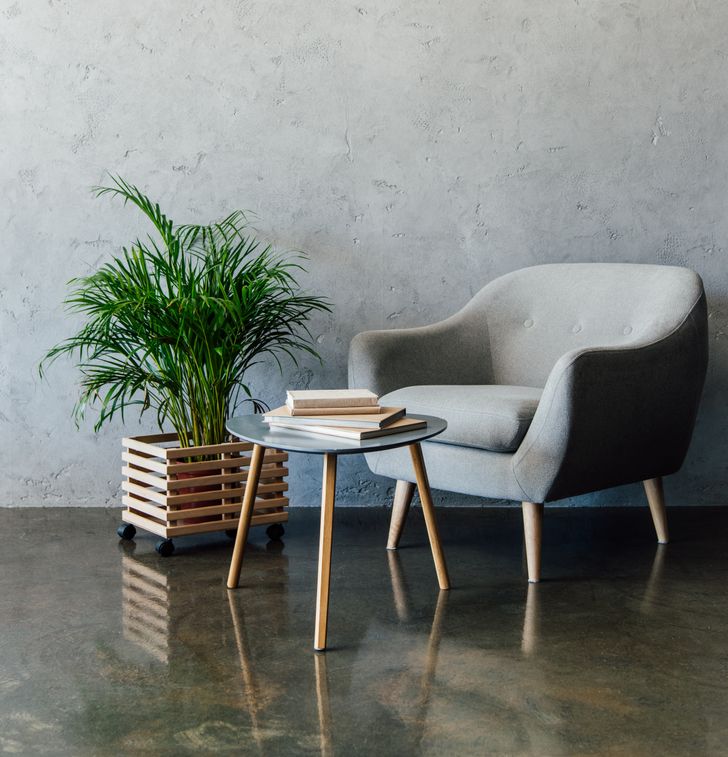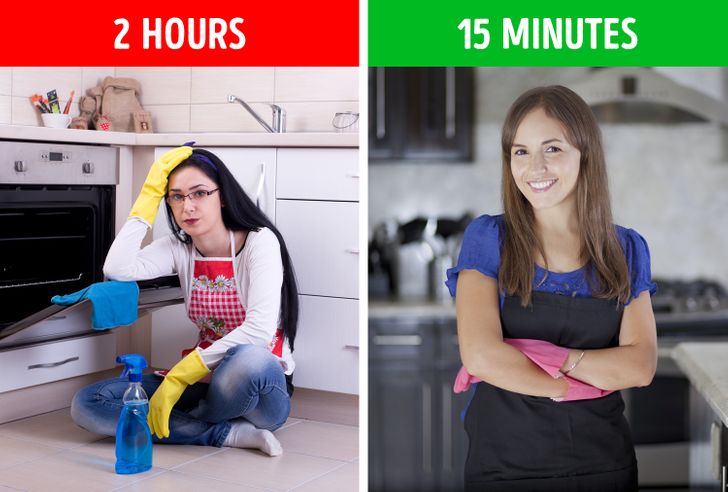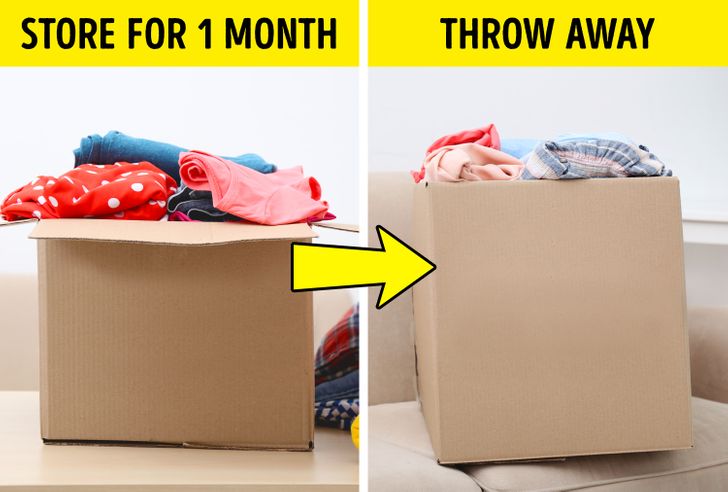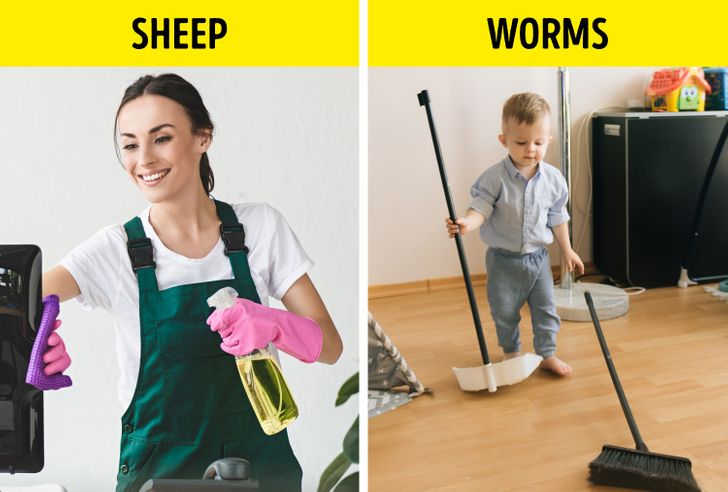Never clean th entire house during one day only! It takes too long and you wish you were dead!
7 Cleaning Systems That Can Save You a Ton of Time
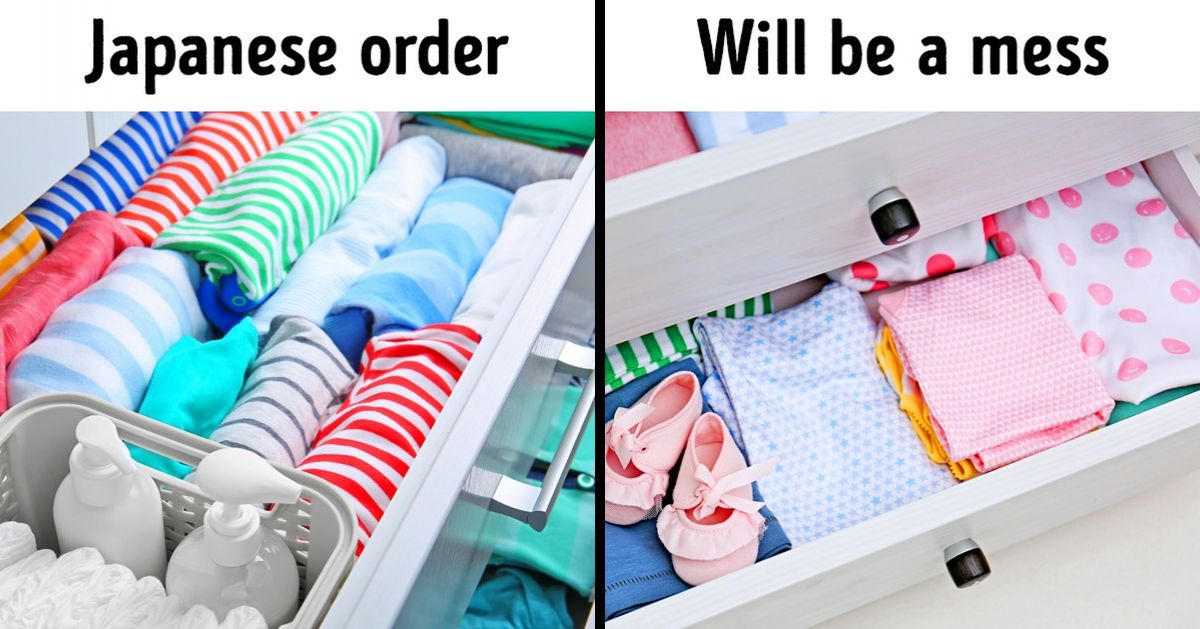
“Lazy” cleaning, “fire method”, or “destroying evidence” — all these things are the names of different tidying methods that are supposed to simplify this unpleasant act that everyone has to do. But the best thing is that these methods really work and their creators explain in detail how to use them the right way.
We at Bright Side will tell you about the most effective tidying methods and their most interesting principles. Some of them will help you to rid your place of the things you don’t need and others will help to solve small, everyday tasks. Maybe, based on these methods, you will be able to invent your own cleaning method!
1. Japanese method: “Just in case...”
At the base of Marie Kondo’s method, there is your own picture of a perfect house. Even if it’s a rented apartment or house that you don’t like for some reason, you can still make it as comfortable as possible.
- Don’t start cleaning up before you throw away all the things you don’t need. The ritual of getting rid of stuff should be done at least every 1.5 to 2 months.
- Try to estimate everything in terms of the comfort it gives you. You will definitely not need the things that are in the deepest corners of your wardrobe that only give you good memories. Thinking you should keep it “just in case” is never wise, so make decisions faster and don’t hold onto stuff.
- Don’t measure memories with things because the memories won’t disappear if you throw away an old plate, a dress you used to wear many years ago, tickets to the concert of your favorite singer or an old grandfather’s frame.
- Sort things not according to the room but rather, according to the category.
- Don’t make your drawers too full! Things that are not seen as often are never used, so give them some room.
- Keep things in a way so you can see them well. For example, if it’s in a cabinet, put the stuff in vertically.
- Create a “place of power”. In other words, create a place where you can enjoy some time surrounded by your favorite stuff.
2. The hug principle
Leo Babauta who created a blog about minimalism asks you to think about why you buy stuff. It may be to have a feeling of safety, for approval, or for comfort. He advises you to try to think about what you really need and what you think you need.
When it comes to cleaning, Leo loves the theory of “small things that are hard to notice” instead of one big thing. For example, it’s better to sweep the floor just as soon as you notice it instead of spreading it around the house and cleaning the entire place.
- Another one of his principles is what he calls, the “hug method”. In the “hug method”, you only clean the areas you can hug with your arms without walking around the entire room. If you move from one area to another, you can finish the cleaning 2 times faster than usual.
- When deciding what you need, you should get 3 boxes and label them as “keep”, “might need”, and “throw away”. Box number 2 has the right to spend just 6 months on your shelf before you throw the stuff away.
3. Messies anonymous
This system was designed in 1982 by Sandra Felton, an American woman who lost her dissertation in her house. This was the last straw: Sandra was tired of feeling like she was doing something wrong, so she decided to study this problem and make her own rules.
She thinks that it’s easy to make a place clean if you have a certain order in it, where everything should have its own place. Teach yourself to put things in their place. This habit, just like any other, can be acquired in 21 days.
Some of Sandra’s rules:
- Ask for help. Ask your relatives to do things that don’t irritate them and help children to treat cleaning like a game with small prizes.
- Use the magic of 3 boxes: “throw away”, “give away or sell”, and “put away for storage”. Make sure that the last box is not big: there should be only the most necessary things inside it.
- If something takes less than 30 seconds (for example washing one plate), do it now and forget about it.
- From time to time, try to look at your house as if it’s not yours in order to decide what can be improved.
4. Burning house method
Alison Hodgson discovered the minimalistic approach to organizing a room and started writing articles about how she relaxed her consciousness when she had a fire in her house. The family had enough time to save only the necessary devices and clothes; the toys and other things were burned. According to Alison, they couldn’t even remember what was kept in the farthest cabinet and they couldn’t throw them away.
Her main recommendation is a little too hopeful, but it still gives us an understanding of what is really valuable: ask yourself what will be the first things you would grab in a fire and only keep the things that really bring you joy.
5. Having fun cleaning with FlyLady
“FlyLady” is probably the most famous cleaning system, mainly because the creator believes that cleaning should be enjoyable. Her main principle is to try to get rid of the stress brought on by long hours of cleaning on weekends. This time could have been spent with your family.
The author of the system recommends spending 15 minutes per day and literally using a timer.
- During the week, pay attention to one area. For example, Monday for the hall, Tuesday for the bathroom, and so on.
- Once a week, do the cleaning in order to remove dust and washing the floor, but this process should not take more than 1 hour.
- Put out the “hot spots” — the places where there is always a lot of stuff: the table, the workplace, and so on. The cleaning won’t take more than 5 minutes.
6. American “un-messing”
“Un-messing” helps to clean your apartment better without having too many extra things around. There are several methods:
- The special box: put the things in this box that you don’t use. Fill the box up once a month. Once a month, give away, sell, or throw away the stuff in the box.
- 1/10 method: every 10 days, throw away 1 thing.
- The rocket method: every day, 10 minutes should be spent on going around the apartment and packing all the trash in a box or in a plastic bag.
7. “Sparkling house” or “sheep and worms”
The “Sparkling house” system is based on the right attitude to cleaning: don’t take it as something global and necessarily unpleasant. This method’s creators turned cleaning into a series of everyday rituals.
- “Destroying evidence” means to clean everything right now — this is the main principle.
- “Mini-routine” is the morning cleaning that starts from ventilating the room, making up the bed, watering flowers, and sorting through stuff.
- “Room of the day” means to choose a room and do more in it than in the others. Spend about 15-30 minutes on cleaning it.
- “Sheep” are the tasks for the room of the day — get rid of the sheep one by one so that there’s no huge herd by the end of the week.
- “Ducks” are tasks geared around un-messing the apartment, sorting stuff in boxes and throwing away the useless ones.
- “Worms” are small everyday tasks for children that they can have fun doing, but they should get used to doing some work every day. They should collect their toys and sort their own clothes after washing — the “worms” should grow together with the child.
Which of these systems did you like most? We liked the “sheep and worms” method and the 30-second rule. Tell us what you think in the comment section below!
Comments
Related Reads
An Artist Draws Cartoon Characters as People, and the Results Are Incredibly Real

12 Acts of Kindness That Made Someone See the Horrible Truth
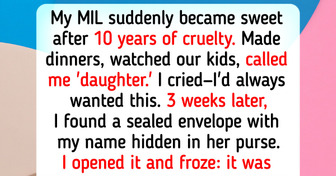
15 True Stories With Mind-Blowing Endings That Could Rival Hollywood
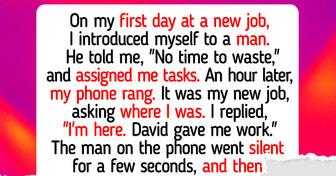
My Parents Said I Was Too Irresponsible to Own a Home, Now They’re Begging to Live in It
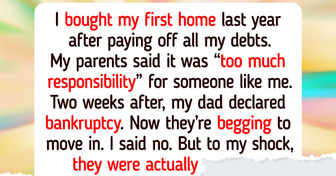
15 Stories That Prove a Small Spark of Kindness Can Light Up a Fading Soul

I Refuse to Stop Using My Pool Just to Please My Neighbor — Our House, Our Rules
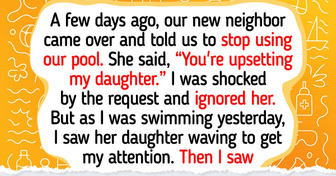
10 Stories of Kindness That Show Angels Walk Among Us Every Second of Every Day
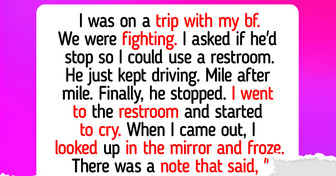
My Coworker Reports Everyone to HR to Get Bonuses—So I Turned the Tables

10 Travelers Who Took “Breaking the Rules” Way Too Far

12 Moments That Prove Kindness Isn’t Weakness—It’s Power Disguised as Empathy
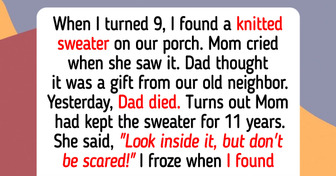
I Refused to Follow My Mom’s “Different Beds” Rule—And the Real Reason Was Heartbreaking

11 Times People Showed That Real Courage Isn’t Loud—It’s Kind
